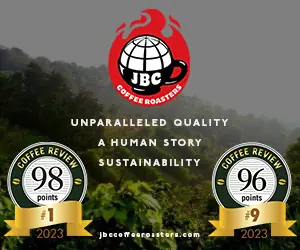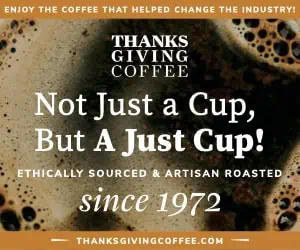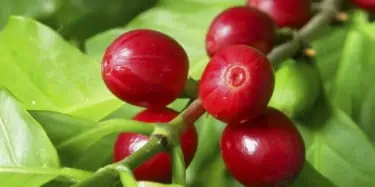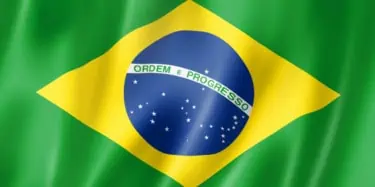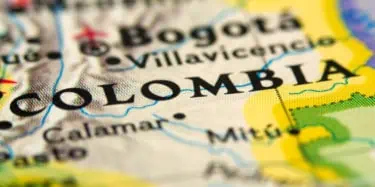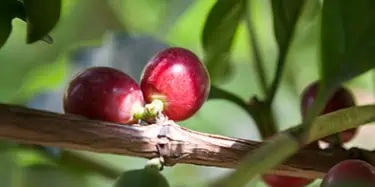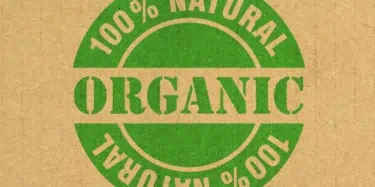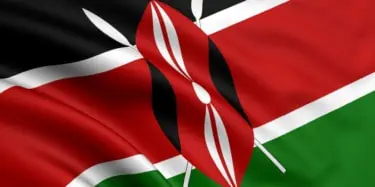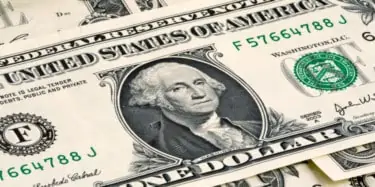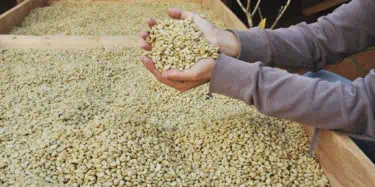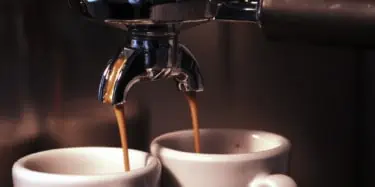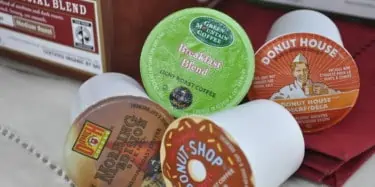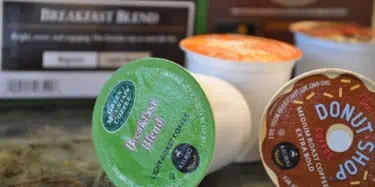Rwanda and Burundi, two small, mountainous, landlocked countries in Central Africa, have emerged over the last few years as significant producers of high-end specialty coffees. Both started their climb to prominence already in possession of the most fundamental ingredients for success: High growing elevations and extensive plantings of distinctive-tasting heirloom Bourbon-related varieties of
Coffees of Brazil
Perhaps the most surprising aspect of this month’s sampling of Brazil coffees may have been the absence of surprises. On the positive side, we suffered through almost none of the dismal “did anyone actually taste this coffee before they sold it?” moments that sometimes turn our cuppings into wakes rather than celebrations. This month’s Brazils tended to be clean, consistent coffees, with a mostly
Coffees of Colombia 2012
Both the dark side and the bright side of the trend toward offering select, precisely identified lots of green coffee (aka “microlots”) showed up in this month’s sampling of thirty-four coffees from Colombia. On the bright side, we cupped several precisely identified, small-lot coffees that expressed pure and subtle variations on the classic Colombia high-grown profile. On the dark side, we had
Benchmarking the New Starbucks and Peet’s Medium Roasts
When Starbucks, bowing to changing tastes in coffee, debuted two “Blonde” medium-roasted blends a couple of weeks ago, reaction among the blogging and tweeting cadres of coffee observers was predictable. One of our readers wrote that she didn’t want to bias us before we tested the new Starbucks blends, but for her they tasted like “cardboard and water.” She added that she would prefer to remain
Low-Acid Coffees
True, acidity is a good thing in coffee. It provides the sweetly tart spark essential to lifting the sensory experience of a fine Arabica coffee from grainy, dull inertness to lively complexity. It signals the presence of certain organic acids with powerful anti-oxidant properties that have helped turn perception of coffee from a health threat to a health drink. Nevertheless, there are many who
Single-Variety Coffees: Aficionado Fun
This month’s reviews give consumers an opportunity to sample fourteen retail-roasted coffees that express a range of the cup character associated with specific botanical varieties of Coffea Arabica. The Arabica species, of course, produces virtually all of the world’s finest coffees. But within that species hundreds of distinct commercial varieties have developed. Coffea arabica is largely
Don’t Give Up Your Grinder: Pre-Ground Supermarket Coffees
Many years ago I was introduced at a party as “the guy responsible for messing up your kitchen counter every morning” because I had asserted in my first coffee book that the single most important thing one could do to improve one’s coffee was to grind it fresh just before brewing it. In the forty years since I’ve had many second thoughts about what I wrote in that first book, but the
From the Transparently Pure to the Creatively Edgy: Twelve Certified Organic Coffees
Organic is the oldest and best established of the various certifications – Fair Trade, Rainforest Alliance, etc. – represented by the little seals that cluster on coffee packaging, all of them intent on reassuring the buyer that something positive has happened with the coffee inside the bag, even though it may not always be clear to the casual consumer what exactly it is or was. With organic
Still Tops: Coffees of Kenya
Generally the central highlands of Kenya produce some of the most complex and subtly distinctive coffees in the world. There are a few other coffee origins/types that may be more distinctive, meaning more different from the sensory norm for coffee: Ethiopia Yirgacheffes, the very finest traditional Sumatras, the small but growing volume of coffee produced in Panama from trees of the Gesha variety.
Nicaragua: Continuity and Innovation
Nicaragua, very much in the news when we last reviewed its coffees in 2004, seems to have slid into the background of coffee consciousness again. In 2004 general coffee prices had just recovered from devastating lows and Nicaragua was in many ways the poster origin representing both the suffering in the coffee sector caused by low prices as well as exciting signs of recovery supported by a new
Regardless of Size, Only the Passionate Rule
The challenge: The highest quality coffee is produced by large, technically sophisticated companies which do a much better job at delivering fresh, consistent, good-value coffees than do most of today’s smaller specialty roasting companies. Neither size nor technical sophistication assures quality. Only the obsessive and unrelenting commitment of a company’s leadership assures a
Making Coffee Travel Relevant
The Challenge: Coffee buyers for roasting companies should be doing much less travel and much more cupping, quality control and customer education. Kenneth Davids writes: I guess my reservation with the challenge statement is the repetition of the “much” word. If the thrust of the challenge statement is to argue that coffee buyers should focus first and foremost on the
Quest for an Everyday Coffee: Macro-Lots
Readers often write to us asking for recommendations for an “everyday” coffee – the equivalent of the $10 bottle of wine, a reasonably priced, reasonably distinctive, but consistently available coffee. Most coffees that attract a high rating on Coffee Review are exceptional in some way: They are often produced from small, or “micro” lots of green coffee, specially selected for quality and
Ken Davids and Kevin Knox exchange views on the microlot trend
The Challenge: The latest roaster emphasis on offering high-priced microlots without also offering a core lineup of good-tasting origin coffees at decent prices is a disservice to consumers. Kenneth Davids writes: I like “micro-lots,” if what is meant by that term are coffees that 1) are small, distinctive lots that have been purchased with particular precision and care by the roaster; 2)
Canada: Doing Fine though Not So Different
This month’s survey of almost forty retail-roasted samples from twenty distinguished Canadian roasters confirms both the depth and liveliness of the current Canadian specialty coffee scene. It also suggests that Canadian specialty coffee roasting has proceeded in an essentially parallel track to specialty roasting in the U.S., although it’s possible to speculate on some very small differences in
Single-Origin Espressos
The practice of roasting a coffee from a single farm or cooperative for espresso brewing is a tactic that appears to be carrying the day at the higher end of the North American specialty coffee world. The old argument against single-origin espressos and in favor of blends ran: Put a single, unblended coffee under the magnifying intensity of espresso brewing and the coffee is liable to come out
The Single-Serve Compromise
The well-publicized commercial success of the Keurig single-serve brewer and Starbucks' efforts to get in on the single-serve action have created much breathless reporting and speculation in the financial press, but we don't hear much about the quality of the coffees the various contending single-serve systems are putting out, or their advantages (or pitfalls) for the coffee-engaged consumer. For
Single-Serve System Reviews 2011
Bunn My Café The Bunn My Café uses paper pods, the same dimension pods as the Senseo brewer. Bunn only brands the brewing units; it does not sell Bunn-branded coffee and no license is required to produce Bunn-compatible paper pods. This hands-off, open format approach makes the Bunn program unique among single-serve systems. Proprietary capsule design: No Approximate cost per serving early
Instant Coffees and Starbucks VIA: Beyond Bad
Snobs are people who make judgments for non-intrinsic reasons. Like brands for example (Starbucks is great, Starbucks sucks), or market ideologies (corporate coffee is bad, coffee from tiny stores with a roaster in the back are good), or on the basis of various other untested assumptions. We try to be anti-snob at Coffee Review by tasting coffees blind and honestly reporting on our findings, even
Readers’ Nominations
Perhaps we can take this annual cupping of coffees nominated by our readers as a kind of informal sampling of the state of specialty coffee based on the People’s input. At least a very small part of the People. If so, this early 2011 sampling provokes the following (strictly organoleptic-dotal and non-scientific) trends and observations. Conclusion one: The taste for darker roasted coffees has





